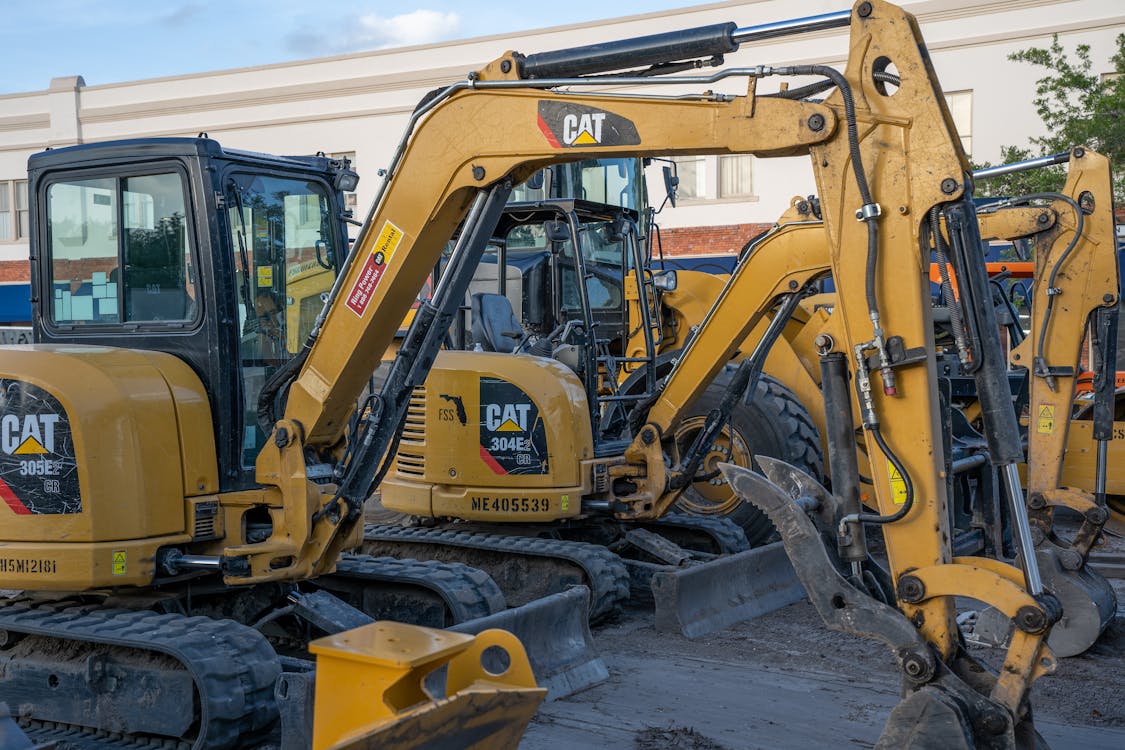1. Define Your Needs
- Identify job site requirements.
- Consider the terrain and working conditions.
- Determine required lifting, digging, or hauling capacity.
- Choose between new, used, or rental options.
2. Select the Right Equipment Type
- Excavators – Digging, trenching, material handling.
- Skid Steers – Compact, versatile, various attachments.
- Bulldozers – Pushing, grading, site prep.
- Loaders – Moving material, lifting, loading trucks.
- Forklifts – Warehouse, rough terrain, heavy loads.
- Cranes – Lifting heavy materials at heights. Cranes for sale.
- Compactors – Soil, asphalt, and landfill compaction.
3. Check Brand and Model Options
- Compare top manufacturers (Caterpillar, Komatsu, Bobcat, John Deere, etc.).
- Review model specifications and performance ratings.
- Consider resale value and brand reputation.
4. Evaluate Key Specifications
- Engine Power – Horsepower, torque, fuel efficiency.
- Hydraulics – Flow rate, pressure, lift capacity.
- Load Capacity – Max weight limits for safety.
- Digging Depth (for Excavators) – Ensures proper reach.
- Lifting Height (for Loaders & Forklifts) – Matches job requirements.
- Operating Weight – Affects transport and fuel usage.
5. Inspect Safety Features
- ROPS/FOPS cab protection.
- Backup cameras and proximity sensors.
- Anti-slip steps and handrails.
- Emergency stop functions.
- Operator visibility and ergonomic controls.
6. Review Attachments & Accessories
- Excavators – Buckets, grapples, breakers, augers.
- Skid Steers – Forks, sweepers, snow pushers.
- Loaders – Pallet forks, snow blades, hydraulic hammers.
- Forklifts – Side shifters, rotators, clamps.
- Cranes – Hooks, jibs, man baskets.
7. Assess Fuel & Power Options
- Diesel – Power and durability for heavy-duty work.
- Electric – Eco-friendly, lower maintenance.
- LPG – Good for indoor operations.
- Hybrid – Fuel efficiency with lower emissions.
8. Compare New vs. Used Equipment
- New – Warranty, latest technology, zero wear.
- Used – Lower cost, potential high maintenance.
- Certified Pre-Owned – Inspected and refurbished by manufacturer.
9. Check Maintenance & Serviceability
- Availability of parts and service centers.
- Ease of daily maintenance (oil checks, filters, greasing).
- Cost of ownership (repairs, downtime, servicing).
- Warranty coverage and extended service plans.
10. Verify Dealer Reputation & Support
- Customer reviews and testimonials.
- Dealer service capabilities (on-site repairs, mobile techs).
- Return policies and equipment guarantees.
- Rental or lease-to-own options.
11. Consider Financing & Budget
- Total cost vs. financing terms.
- Lease vs. purchase options.
- Interest rates and payment flexibility.
- Tax benefits for heavy equipment purchases.
12. Confirm Compliance & Regulations
- Meets OSHA, EPA, and local emission standards.
- Proper licensing and documentation.
- Operator training and certification requirements.
- Insurance coverage for equipment and liability.
13. Plan for Transport & Logistics
- Equipment dimensions and transport requirements.
- Availability of trailers or specialized hauling.
- Site accessibility for delivery.
- Storage and security when not in use.
14. Test Equipment Before Buying
- Check for smooth operation and responsiveness.
- Inspect for leaks, wear, and structural integrity.
- Test controls, braking, and hydraulic functions.
- Evaluate comfort and ergonomics for operators.
15. Finalize Your Purchase
- Review contract terms and warranty details.
- Negotiate for additional services (training, free maintenance).
- Schedule delivery and setup.
- Keep all purchase records and manuals for reference.


